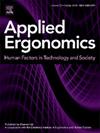应用人为因素/人体工程学来支持医疗保健的变化——在重症监护病房进行抗生素过敏去标签的创新合作设计方法
IF 3.4
2区 工程技术
Q2 ENGINEERING, INDUSTRIAL
引用次数: 0
摘要
在复杂的医疗保健系统中实施变革本身就很困难,大多数变革举措都以失败告终。人为因素/人体工程学可以通过更好地理解当前系统,设计和实施新的改进的工作方式来支持变革过程。四分之一的患者有抗生素过敏记录。不准确和未经证实的抗生素过敏标签对患者的预后有负面影响。作者已经参与了在重症监护病房成功引入过敏去标签的新方法。本研究的主要目的是概述如何通过将人为因素/人体工程学应用于变化过程来支持这种变化。使用Cube社会技术系统分析来理解和支持跨文化、系统功能、行动和意义四个领域的复杂变化,并跨越理解当前“现状”问题的变化周期;共同设计“未来”解决方案;计划和准备改变;实现和嵌入变更。在研究过程中,85名报告有非免疫性或低风险抗生素过敏的患者成功地去除了标签。这项研究举例说明了人为因素/人体工程学在行动中,并表明采取结构化的方法来改变,旨在理解和改变不同的系统组件,可以达到效果。本文章由计算机程序翻译,如有差异,请以英文原文为准。
Applying Human Factors/Ergonomics to support change in healthcare - An innovative co-designed approach to conducting antibiotic allergy de-labelling in the intensive care unit
Implementing change in complex healthcare systems is inherently difficult, with most change initiatives failing. Human Factors/Ergonomics can support change processes through better understanding of the current system and designing and implementing new improved ways of working. One in four patients have a documented antibiotic allergy. Inaccurate and unverified antibiotic allergy labels have a negative impact on patient outcomes. The authors have been involved in the successful introduction of a new approach to allergy de-labelling in the intensive care unit. The primary objective of this study was to outline how this change was supported by applying Human Factors/Ergonomics to the change process. The Cube socio-technical systems analysis was used to understand and support this complex change across four domains of culture, system functioning, action and sensemaking and across a change cycle of understanding the current ‘as is’ problem; co-designing the ‘to be’ solution; planning and preparing to change; implementing and embedding the change. Over the course of the study 85 patients with either a reported non-immune or low risk antibiotic allergy were successfully de-labelled. This study exemplifies Human Factors/Ergonomics in action and has shown that taking a structured approach to change, that aims to understand and alter different system components, can achieve results.
求助全文
通过发布文献求助,成功后即可免费获取论文全文。
去求助
来源期刊

Applied Ergonomics
工程技术-工程:工业
CiteScore
7.50
自引率
9.40%
发文量
248
审稿时长
53 days
期刊介绍:
Applied Ergonomics is aimed at ergonomists and all those interested in applying ergonomics/human factors in the design, planning and management of technical and social systems at work or leisure. Readership is truly international with subscribers in over 50 countries. Professionals for whom Applied Ergonomics is of interest include: ergonomists, designers, industrial engineers, health and safety specialists, systems engineers, design engineers, organizational psychologists, occupational health specialists and human-computer interaction specialists.
 求助内容:
求助内容: 应助结果提醒方式:
应助结果提醒方式:


